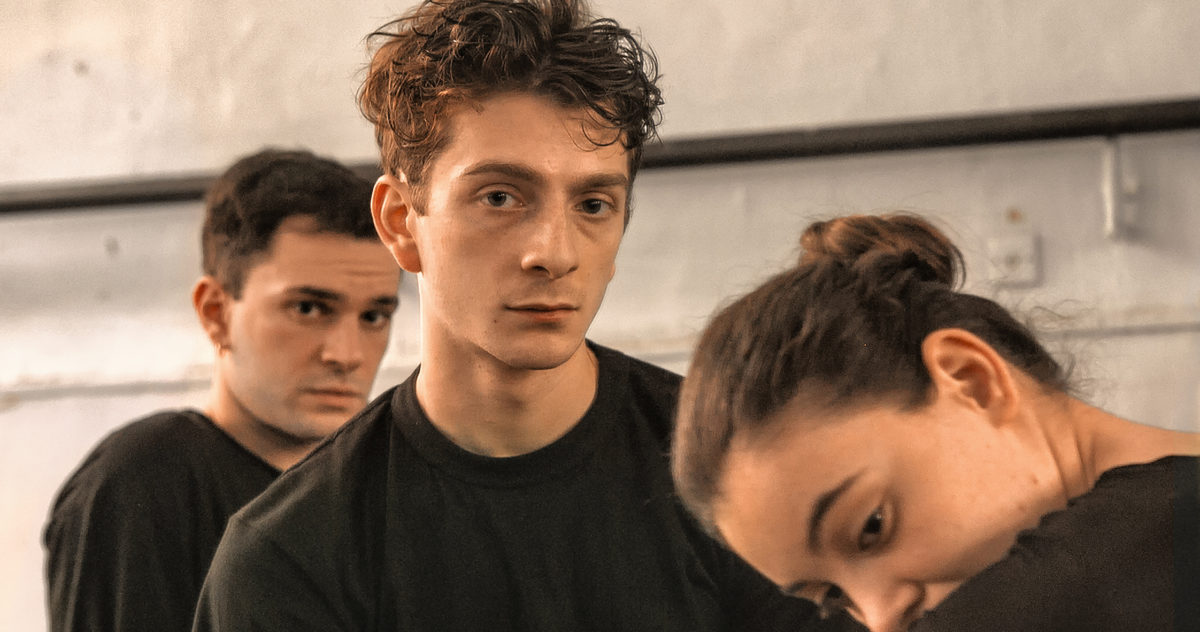Before dance was a substantial part of film history with the emergence of the musical genre, elaborate choreographies entered the cinematic scene as grand spectacles in service of the “cinema of attractions”. Aiming at visual pleasure alone, films belonging to this category focused on breath-taking images that sparked the audience’s curiosity. Loie Fuller’s angelic and demonic choreographies from Louis Lumière’s Danse Serpentine (1896), for example, added flair to early cinema. Fuller’s experimentations with fabric movement and innovative lighting techniques combined into an ethereal performance; in collaboration with her partner Gab Sorère, Fuller used illusions to form a novel kinaesthetic experience. Two women living ahead of their times, Fuller and Sorère challenged 19th century gender roles not only in their ground-breaking dance sequences, which contemporary reviewers described in abstract, ephemeral rather than traditional, gendered terms, but also through their romantic relationship.
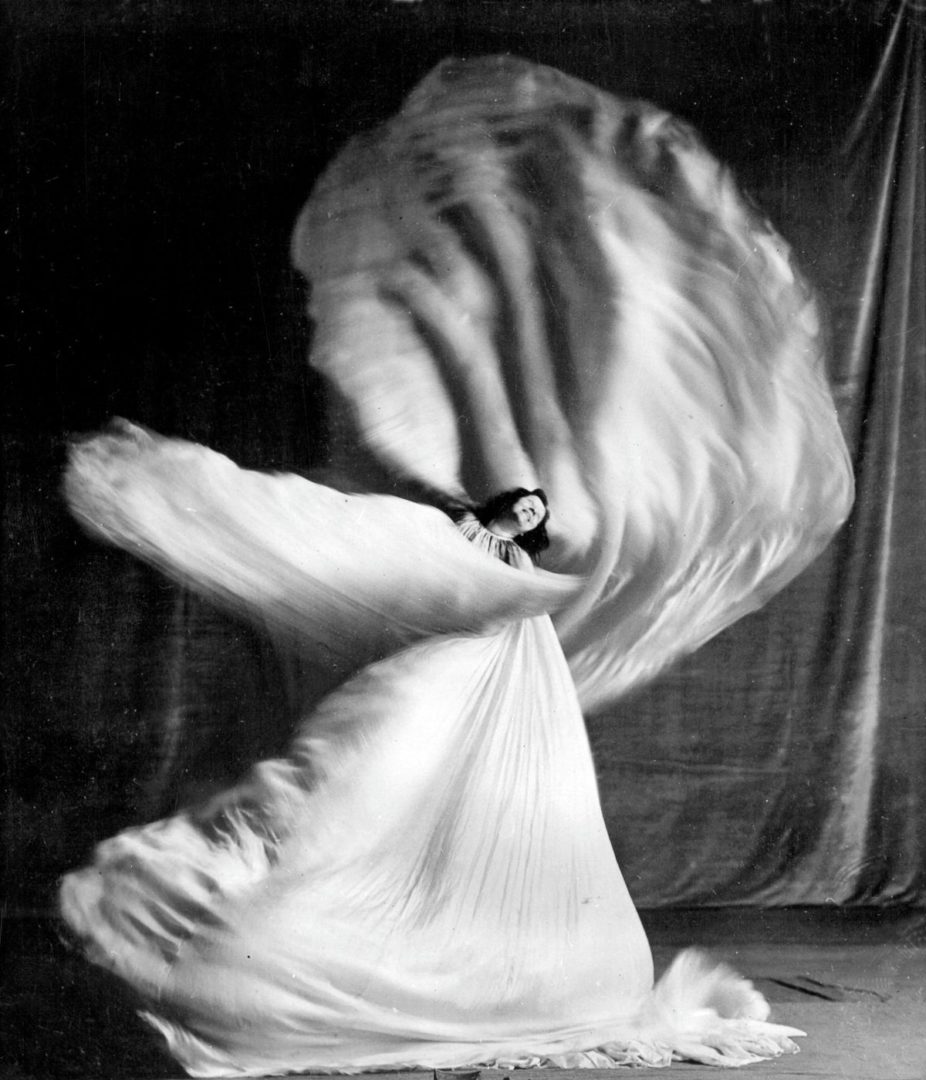
Similarly, Marlene Dietrich raised eyebrows throughout her career by building an alluring persona based on her exotic beauty, her cutting-edge fashion sense, and her alternative lifestyle. Bending gender norms, she dressed in men’s trousers and had several affairs with both men and women. Dietrich’s free-spirited qualities were also reflected in her roles. Her ‘Hot Voodoo’ dance number in Josef von Sternberg’s Blonde Venus (1932) takes an eccentric turn when the gorilla inside the cabaret setting is revealed to be none other than its lead entertainer herself. Dietrich undresses on stage and transforms from a deadly mammal to Venus, goddess of love, sex, and beauty. Obviously, a woman celebrating her sexuality and her body’s desirability, within the context of a cabaret on top of that, are not qualities that were approved of by society back in the 1930s.
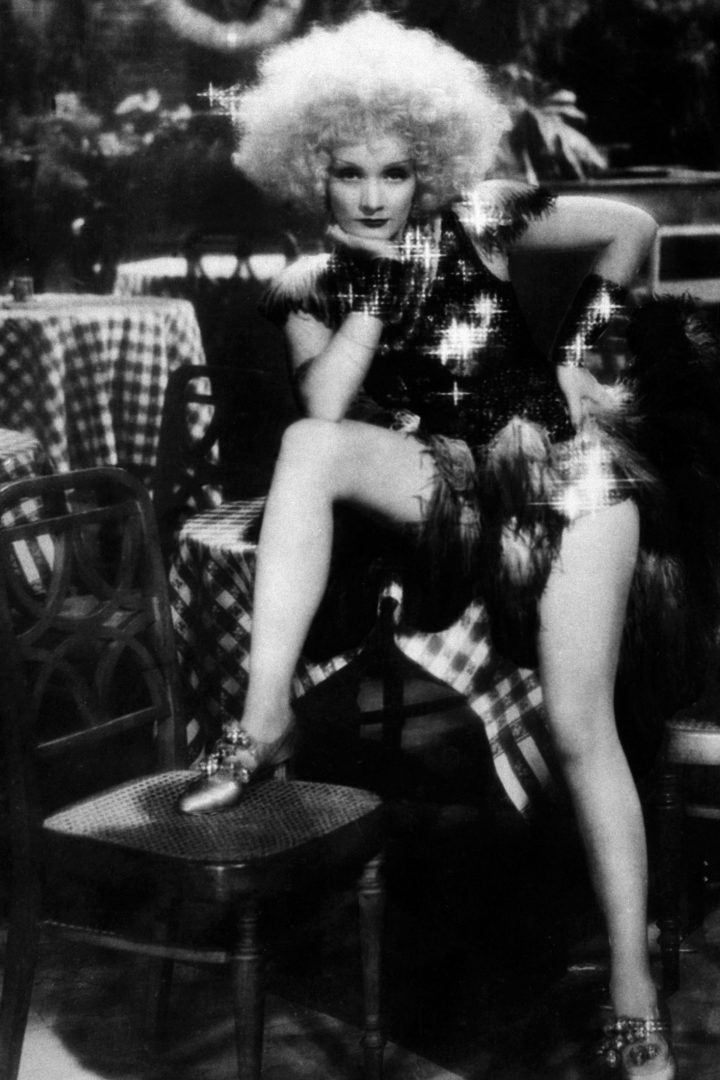
In the dominantly conservative American society of the 1950s, Gene Kelly, and his ideas about dance as an art, challenged the cultural moment through choreographies in which he combined two inherently opposite notions, the male/female binary. When Kelly combined his athletic style of dancing with classical ballet technique, he not only transformed the movie musical but also did his part in changing the public’s conception of male dancers. In essence, Kelly’s methods deconstructed the nature of gender in relation to dance, while managing to sell his choreographies as an expression of macho masculinity. Although his most famous number has to be ‘Singin’ in the Rain’, in the musical with the same name, it’s not a paradigmatic example of his work. A few years prior, Kelly incorporated ballet moves in the dancing routines of the sailor he portrayed in On the Town, the 1949 film he co-directed with Stanley Donen, and in doing so defied standardized depictions of gender.
In these examples, dance and popular film are used as a medium for the projection and celebration of unconventional ideas regarding the body, and by extension its conception in gendered terms. Based on the idea that the role of man/woman is merely an ideologically constructed performance, there’s no logical reason to argue that specific types of dance belong to either gender.
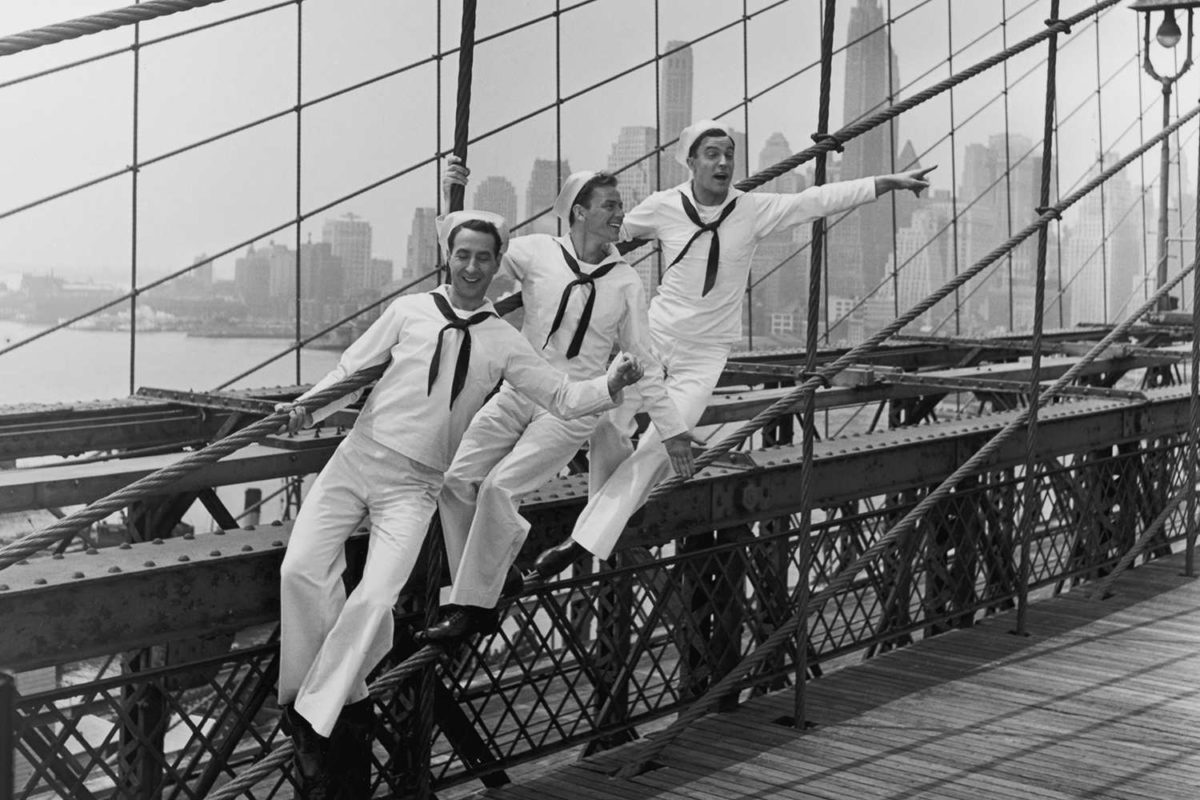
Levan Akin’s And Then We Danced (2019), the Swedish entry for this year’s Academy Award for Best International Feature Film, is emblematic of this concept. At the same time, it preoccupies itself with the clash between collective and individual identity. Set in Tbilisi, Georgia, the film tells the story of Merab (Levan Gelbakhiani), a waiter in his 20s who dances for the National Georgian Ensemble. Georgian folk dance is preoccupied with carrying on the country’s collective identity and its dancers, both male and female, represent an ideal that is bigger than themselves; they have to abide by certain predetermined prerequisites both in their appearance and their movements. So, while male Georgian dancers have to demonstrate nobility, bravery, honour, and pride, female dancers have to represent virginal purity, and innocence.
There’s no denying that Merab is a gifted dancer; his artistic inclination, however, is not deemed compatible with the stereotypes the male Georgian dancer must abide by. This culture, revolving around men who have certain upper body strength, has no tolerance for either “weakness” or “mistake”, as Merab’s dance instructor Aleko (Kakha Gogidze) declares. Merab is constantly interrupted during rehearsals due to his inability to obey the dance rules. Yet even when he is warned on a regular basis that the National Georgian Ensemble is not for him because his gestures are “too soft”, he isn’t about to give up; he wants to be part of Georgian tradition and there’s no alternative path to success. When Irakli (Bachi Valishvili), initially his rival and eventually his lover, enters the scene, Merab accepts himself and his unsuitability to be a member of the main ensemble. Strengthened by this newfound awareness, Merab embraces every movement that comes natural to him. Only then does he transcend previous limitations put upon him, and proves his true worth. From thesis and antithesis we reach a moment of synthesis, which culminates in Merab’s adaptation of traditional Georgian choreographies to his unique style and technique, moulding it into something original.
The conflict is introduced early on: Merab’s body, though male in terms of biological makeup, lacks the necessary build of the standard male Georgian dancer. The film opens in a room, whose interior is practically empty; the room has no identity, but the dances practiced within it have insurmountable National value. A visually obvious outsider in this quintessentially Georgian place, Merab is skinny and has no prominent muscle tone. What truly marks Merab’s Otherness, however, doesn’t stem from his appearance per se, but rather from his style of movement; his hand gestures, and overall bearing, are somewhat effeminate. It’s as if knowledge of his incompatibility with the epitome of Georgian masculinity is ingrained in his more delicate motions as they supposedly fail to fully encapsulate the Nation’s heart. The choreographies of Georgian dances that are displayed throughout the film require a very specific body posture. Following a 2-meter tempo, most of the time, they are very intense and fast. The upper body is supposed to be always rigidly upright, signifying pride and authority, constructing an identity of someone who is commanding and self-confident. Despite Merab’s constant practice, whether inside the studio or at home, his body never masters the qualities demanded by tradition. It’s as if it refuses to become part of a culture that doesn’t allow him to be himself.
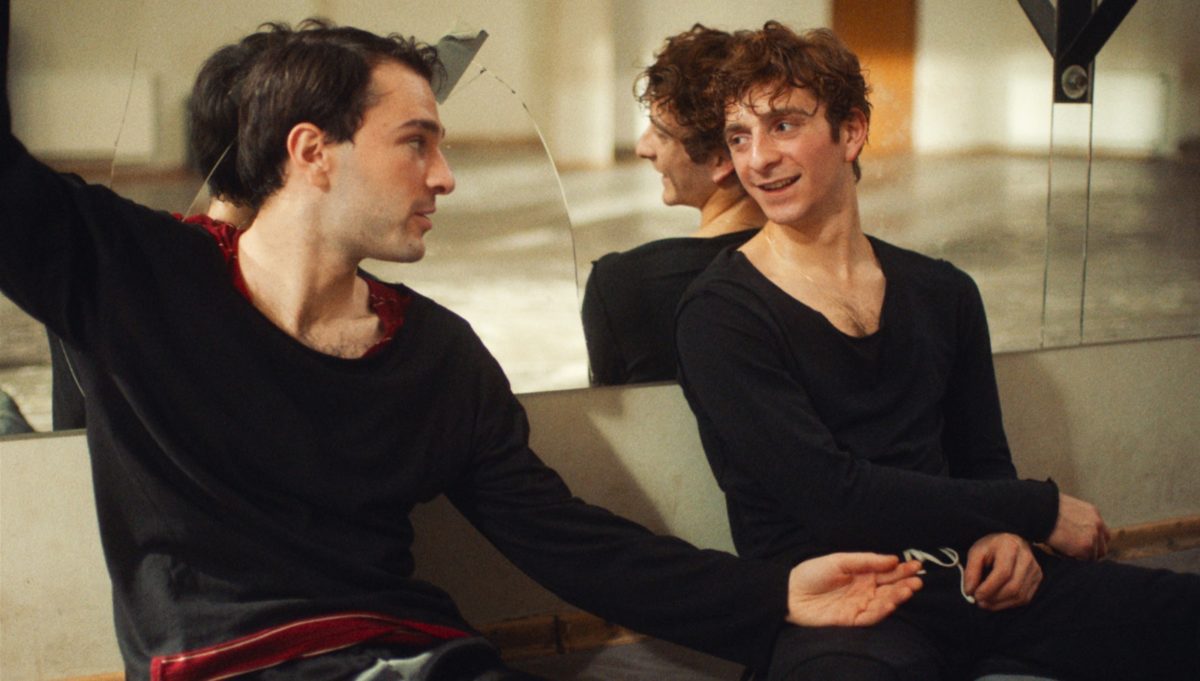
Merab’s incompatibility with the sheer physicality of Georgian traditional dance is highlighted by how it contrasts with Irakli’s virility and muscular body. Initially, Irakli is Merab’s competitor or even his superior. Yet, instead of becoming a source of discouragement for him, Irakli turns into an inspiration; he is the catalyst for Merab’s self-acceptance. As they spend more time together, realizing day by day that there’s something between them, Merab and Irakli eventually fall in love. The dance studio in which they meet, however, is paradigmatic of conservative ideologies that don’t leave space for individual thought; a temple of tradition that has no tolerance for same sex attraction. For that reason, as long as he stays within the boundaries of his day-to-day environment, living within a society in which two men can’t be together, Merab can’t construct a unified sense of identity. The film signals Merab’s yearning for escape by physically leaving its original setting behind, relocating to a vacation home. This change from an urban to a rural background not only emphasizes Merab’s connection to what comes natural to him, but also creates a neutral space that’s not restricted by the burden of specific roles both he and Irakli need to perform: that of the son, boyfriend, dancer. This idea leads to a climactic scene of Merab freestyle dancing for Irakli to Robyn’s ‘Honey’ while a single light source illuminates his whole body and leaves Irakli in the dark. With Merab in the spotlight, this is markedly his moment. Merab (and in fact actor Levan Gelbakhiani as well) improvises without the confines of a specific choreography; every movement connects to his individual identity, rather than the Georgian collective one. Shirtless, with a cigarette in his mouth and Irakli lying down on the couch in front of him, Merab breaks into dance slowly with smooth and sensual movements, a papakha, the wool hat of the Georgian male dancer’s costume, perched on his head. It’s the film’s first instance of self-expression through dance. What is expressed in this case is sexual desire.
In that experience of incomparable freedom, Merab has actualized an element of his individual identity, namely his homosexuality. Embracing his sexual orientation as he dances, Merab escapes feelings of doubt or shame. These bits of pure acceptance are the foundation of the film’s success. The fact that Merab and Irakli don’t end up together is beside the point; the film’s true essence comes in Merab’s growth, not only emotionally, but also kinetically. After Irakli disappears without a word, Merab lapses into sadness until he meets a new group of friends that introduce him to the small LGBTQ culture of Tbilisi by taking him to a nightclub. This new spatial transition marks another advance in his personal development, fostering freedom of thought, need and want. Merab’s night out is a moment of belonging and empowerment; a revolutionary act of confidence enhanced by the somewhat dimmed neon lighting of the club. Here, Merab is at ease; with closed eyes he reveals his inner rhythm and feels comfortable in his own skin. This points back to the Queer dance scenes of the 1970s and 1980s, mostly in the US, and how dance was used as a form of liberation within a welcoming space without judgment. Exclusion from heteronormative artistic dance forms led to innovation. From the performances of Les Ballets Trockadero de Monte Carlo, during which an all-male drag ballet group acts out both male and female parts to challenge ballet conventions, to Queer Tango, namely Argentine Tango but without the assignment of the leader/follower roles based on gender alone, dance often functions as a creative haven for LGBTQ communities.
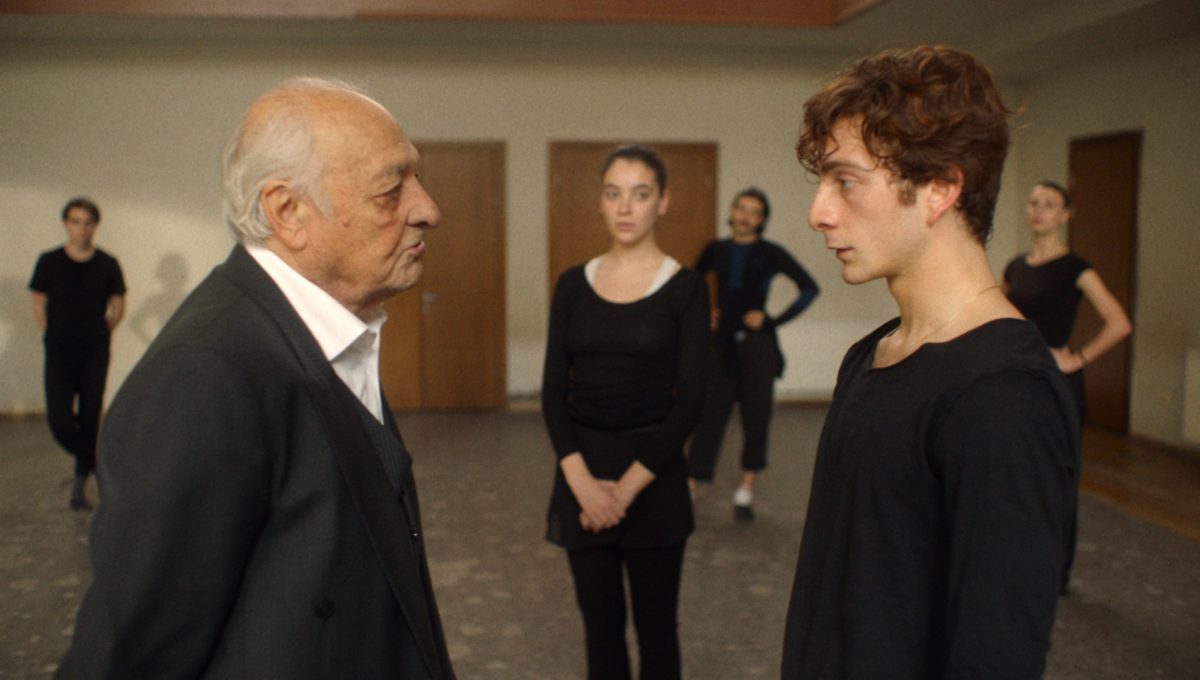
This type of reinvention for inclusion can be detected in Merab’s final performance in the film, i.e. the audition scene for the main National ensemble. His inability to execute the audition’s choreographies is exacerbated by an ankle injury sustained during a previous rehearsal, as he manically kept dancing while his instructor continuously ordered him to stop. Merab enters the studio, wearing the traditional costume, and in doing so embodying the collective identity of the Georgian Nation, but fails to perfectly follow the routine’s demanding steps. Never the one to give up, however, he begins incorporating personal touches within the choreography both in terms of movement and rhythm. He adds an erotic fluidity that defies the “there’s no sexuality in Georgian dance” rule. Merab touches his face, as if truly experiencing it for the first time; he even wraps his arms around himself, with enviable flexibility, in a self-loving embrace. It’s not just another moment of self-expression, but also a point of synthesis. After the dance is over, Merab leaves the traditional costume behind. This detail symbolically hints to the fact that he understands he doesn’t fit in, but most importantly, he doesn’t care anymore. No longer willing to give up his identity to conform to the male Georgian dancer archetype, he transcends it.
From now on, Merab is seen in a new light, quite literally so. During the final audition, a romantic, soft light shines through the windows as the sun gradually sets, enveloping Merab and illuminating his confidence and courage. His new demeanour, almost resembling a theatrical performance, is presented as though in astonishment, with the camera’s movement suggesting a feeling of awe. In earlier rehearsals, solo dancers were shown surrounded by dance instructor Aleko and the rest of the group. By crosscutting between over-the-shoulder shots and medium shots, the camera’s point of view imitated the gaze of either Aleko or the other students, resulting in a claustrophobic feeling of always being watched. During the final audition scene however, the camera is seduced by Merab. Following him obsessively, whether he jumps up high or crawls on the ground, the camera strives to keep Merab at the centre of the frame, trying to capture everything.
Acceptance doesn’t solely come in how Merab is depicted, however; it’s also established through his instructor’s reaction to his newfound sense of self. Whereas the representative of the main National ensemble, a very old man, is too far removed from Merab’s generation to understand him, Aleko doesn’t prevent Merab from finishing his audition. There’s no doubt that he won’t be joining the main ensemble, yet Aleko merely observes how Merab deals with this kinetic experience without reprimanding him. This acceptance by an authoritative figure of Merab’s adaptation of Georgian tradition, his recreation of a conservative system, signals the possibility of change. After all, the title And Then We Danced shows exactly that. The conjunction “and” suggests that dancing follows something that has happened. The preposition “then” connotes that the dancing is a direct consequence of the aforementioned incident. Overcoming self-doubt, Merab owns his identity and can finally dance in celebration of who he is. It proclaims a kinetic tribute to acceptance: And Then We Danced!
